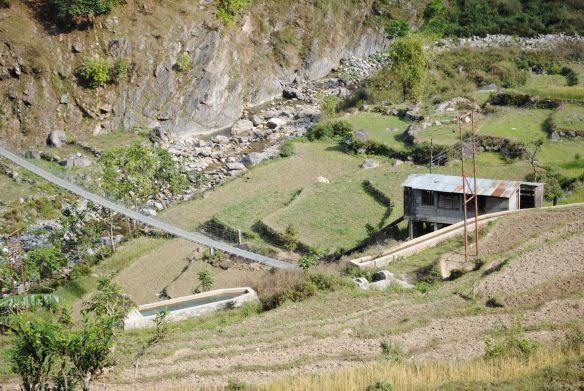How China Salami – Sliced An Entire Nepal Village While Oli Was Sleeping

In many places, the encroachment has been done simply by shifting border pillars.
China has encroached at least 28 hectares of Nepali land spread across four districts of Humla, Rasuwa, Sankhuwasabha and Sindhupalchok. This has been revealed by reports prepared by Nepali agencies, which have been seen by The Sunday Guardian.
Since 1962, China has also taken over an entire village that falls in the world famous Gorkha district, but this fact has come to light only now after a local publication carried a story recently.
According to official sources in Nepal, in many places, the encroachment has been done simply by shifting border pillars.
Shiva Upreti, the Gorkha district correspondent of Nepalese newspaper Annapurna Post in a story done on 7 July, had revealed that China has occupied the entire Rui village that comes under Gorkha district.
Speaking to The Sunday Guardian, a local journalist who is based in Gorkha district, said that the Chinese had occupied the Rui village in 1962 itself.
According to him, the Chinese had taken over the entire village by simply shifting the pillars that demarcate one side from the other. “Border marker numbers 34,35,36,37,38 had been shifted at the border (that denoted Nepal’s claim over the territory), which has led to Northern Gorkha’s Rui Village falling into China’s Tibet region. 170 households of Rui village of Gorkha district and 18 houses of Darchula are in Chinese territory despite being a part of Nepal,” he said.
According to him, it was only after this story was published in the Annapurna Post that the Opposition parties of Nepal took cognizance of the matter and brought a motion in the Parliament.
One of the pillars that have been shifted by the Chinese.
Other local Kathmandu-based journalists with whom The Sunday Guardian spoke to said that the residents of Rui village have lost monasteries and grazing land to the Chinese now. “The local government officer went to this village in 2019 and this was the first time that a government officer had visited this village since 1962. And this was when the locals told him about the Chinese encroachment,” a journalist said.
The Sunday Guardian also reached out to other journalists based in Nepal, seeking to know whether any action has been taken by the K.P. Sharma Oli government to “recover” the Chinese occupied territory following the publication of the news in Annapurna Post. However, as per local journalists, there was no change on the ground and the village continued to be occupied by the Chinese despite the locals paying tax to the Nepalese government.
As per rules, the border talks between Nepal and China are to be held every 10 years, but it has not happened for decades now.
It is pertinent to mention that earlier this week, Nepal’s opposition party, the Nepali Congress, had moved a motion in the Lower House of Nepali Parliament, seeking the response of the K.P. Oli-led government on the issue of Nepalese land encroached by China.
The motion was moved by Nepali Congress lawmakers Devendra Raj Kandel, Satya Narayan Sharma Khanal and Sanjaya Kumar Gautam. In their motion, which has been seen, the three lawmakers have claimed that “64 hectares has been encroached upon in Dolakha, Humla, Sindhupalchowk, Sankhuwasabha, Gorkha and Rasuwa districts of Nepal by China”.
As per the findings, regarding the encroachment of 28 hectares in the four districts of Humla, Rasuwa, Sankhuwasabha and Sindhupalchok, China has taken over parts of rivers that are on the Nepalese side including: 2 hectares in Bhagdare river in Humla district; one hectare in Samjen river; 3 hectares in Jawamu river; one hectare in Bhurjuga river; one hectare in Lenche river in Rasuwa district; 7 hectares in Kharane river; 4 hectares in Bhotekoshi; 3 hectares in Samjung river of Sindhupalchok district, 2 hectares of land in Kamu river and 4 hectares in Arun river of Sankhuwasabha district.
On 5th June, the Nepalese Ministry of Foreign Affairs refuted reports that China has encroached on its territory while stating that boundary (border) markers no. 37 and 38 had never been erected between the two countries owing to the natural conditions.




